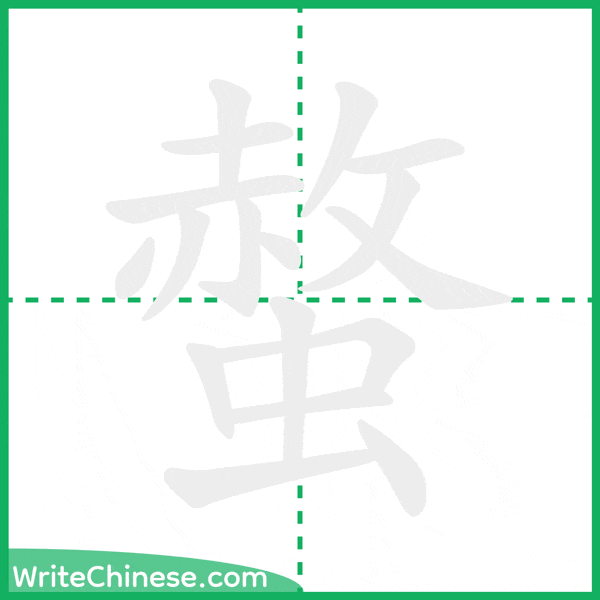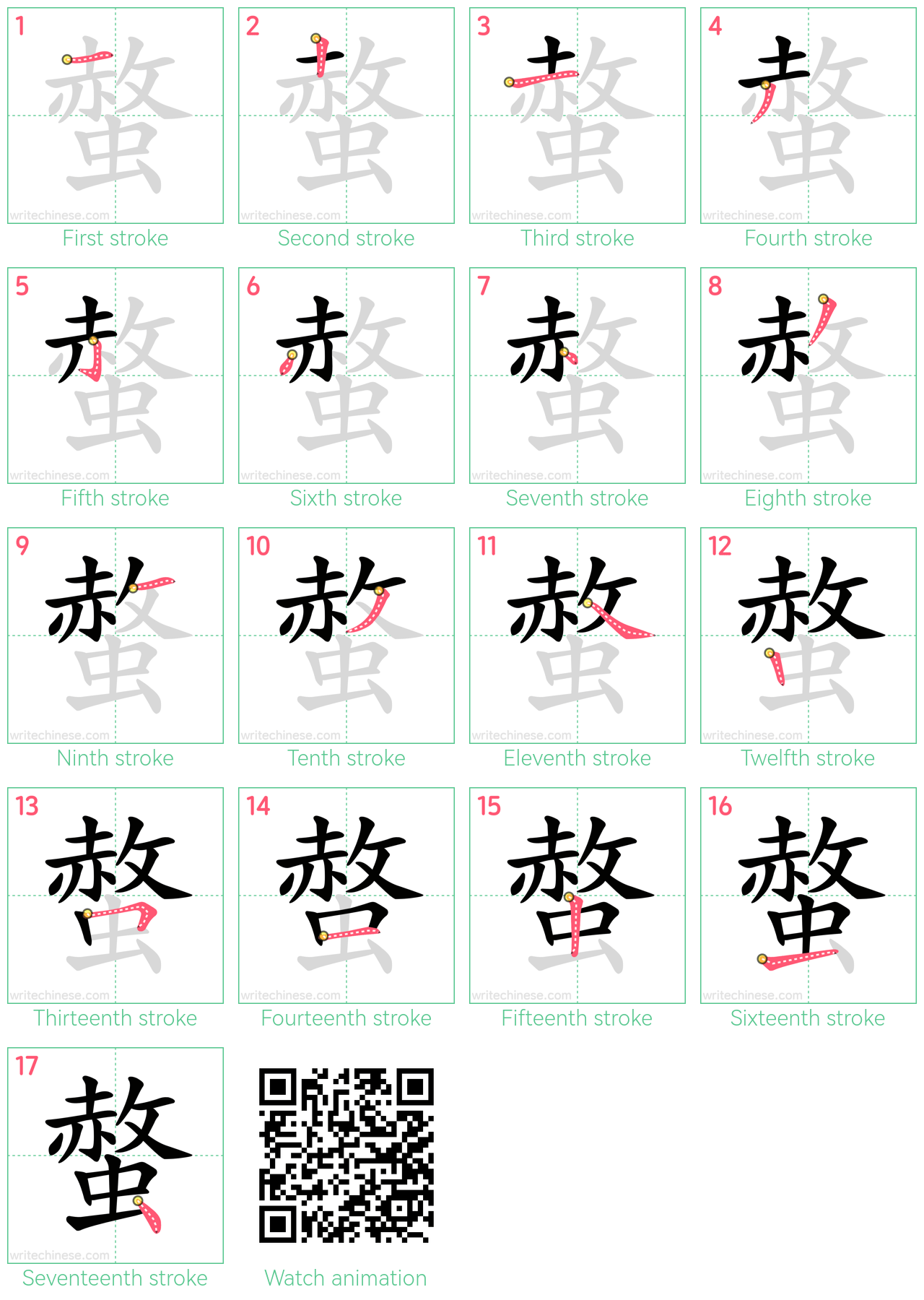How to write 螫
Animated Stroke Order of 螫
Learn to write the Chinese character "螫" by watching the stroke order animation of "螫".

Stroke by Stroke: 螫 Writing Order
Master the Chinese character '螫' stroke by stroke with visual step-by-step instructions.

Follow the Calligraphy Master: Writing '螫' Step-by-Step
Learn the proper way to write the Chinese character '螫' through a video tutorial with a calligraphy teacher. Follow the Calligraphy Master's Step-by-Step Guide to Write the Chinese Character '螫'. You can download the printable handwriting worksheets below and practice writing together with pen and paper.
Free Printable 螫 Handwriting Practice Worksheets
Meaning of 螫
Same Pronunciation Characters
Same Radical Characters
- 虫
- 虹
- 虽
- 虾
- 蚁
- 蚂
- 蚊
- 蚌
- 蚓
- 蚣
- 蚤
- 蚪
- 蚯
- 蛀
- 蛇
- 蛋
- 蛙
- 蛛
- 蛤
- 蛮
- 蛾
- 蜀
- 蜂
- 蜈
- 蜒
- 蜓
- 蜕
- 蜗
- 蜘
- 蜜
- 蜡
- 蜻
- 蝇
- 蝉
- 蝌
- 蝎
- 蝗
- 蝙
- 蝴
- 蝶
- 螃
- 融
- 螺
- 蟀
- 蟆
- 蟋
- 蟹
- 蠕
- 蠢
- 虬
- 虮
- 虱
- 虺
- 虻
- 虼
- 虿
- 蚋
- 蚍
- 蚜
- 蚝
- 蚧
- 蚨
- 蚩
- 蚬
- 蚰
- 蚱
- 蚴
- 蚶
- 蛄
- 蛆
- 蛉
- 蛊
- 蛎
- 蛏
- 蛐
- 蛔
- 蛘
- 蛞
- 蛟
- 蛩
- 蛭
- 蛰
- 蛱
- 蛲
- 蛳
- 蛴
- 蛸
- 蛹
- 蜃
- 蜇
- 蜉
- 蜊
- 蜍
- 蜚
- 蜞
- 蜢
- 蜣
- 蜥
- 蜩
- 蜮
- 蜱
- 蜴
- 蜷
- 蜿
- 蝈
- 蝓
- 蝣
- 蝥
- 蝮
- 蝰
- 蝻
- 蝼
- 蝽
- 蝾
- 螂
- 螅
- 螈
- 螋
- 螟
- 螨
- 螫
- 螬
- 螭
- 螯
- 螳
- 螵
- 螽
- 蟊
- 蟑
- 蟒
- 蟛
- 蟠
- 蟥
- 蟪
- 蟮
- 蟾
- 蠊
- 蠓
- 蠖
- 蠡
- 蠲
- 蠹
- 虰
- 蚖
- 蚵
- 蚺
- 蛑
- 蛜
- 蛵
- 蛺
- 蛻
- 蜎
- 蜾
- 蝕
- 蝟
- 蝤
- 蝦
- 蝨
- 蝸
- 螄
- 螉
- 螓
- 螗
- 螞
- 螢
- 螮
- 螻
- 蟄
- 蟈
- 蟎
- 蟏
- 蟓
- 蟜
- 蟟
- 蟢
- 蟣
- 蟬
- 蟭
- 蟯
- 蟲
- 蟻
- 蠃
- 蠅
- 蠍
- 蠑
- 蠔
- 蠛
- 蠟
- 蠣
- 蠨
- 蠮
- 蠱
- 蠵
- 蠶
- 蠻
- 蠼


